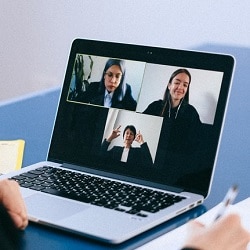
Remote hearings: New system has several benefits
HM Courts & Tribunals Service is set to roll out a new bespoke platform for remote hearings in the autumn, replacing the Cloud Video Platform (CVP), it has revealed.
The Video Hearings Service is already being used in a small number of civil and family courts and by tribunals, including the property, tax, employment and immigration chambers.
The service is also being tested at Chester Crown Court to explore how it will support the specific processes and requirements of criminal hearings.
Writing on the HMCTS blog, Claire Jukes, its senior service manager, described the move as “a huge undertaking”.
She explained that the CVP was put in place in the wake of the pandemic. “As an ‘off the shelf’ service it’s met our needs so far, but longer term we need to cater for the specific requirements of a court or tribunal hearing. That’s where the Video Hearings Service comes in.
“Our vision – that we’re already working towards – is to provide a service that’s flexible and improves access to justice for all court users.
“The Video Hearings Service has been designed in partnership with judges, justice partners and other stakeholders to reflect the formality of a court hearing.”
One feature is simultaneous interpretation, “which allows participants and their interpreters to hear each other in the hearing and in a virtual meeting room, allowing interpretation to proceed without disrupting the hearing”.
Other benefits, Ms Jukes said, included “displaying court rules prominently”, virtual meeting rooms that allow for secure, pre-hearing consultations and negotiations without the need for people to switch to another platform, “secure, private meeting rooms for judicial office holders to deliberate”, and a built-in self-check that people can use before the hearing to make sure their equipment works.
There is specialist technical support based in HMCTS’s service centres.
“We’re in ongoing talks with stakeholders from the third sector, professional court user associations and of course, the judiciary, to make sure it meets the needs of participants attending a hearing remotely.”
Ms Jukes added that the way users join a hearing was different to other remote hearings platforms, including CVP, such as most participants needing an account to join the hearing and a link specific to each hearing, “meaning that when there’s a short notice change, like a change in advocates, we can share a link quickly”.
















Leave a Comment